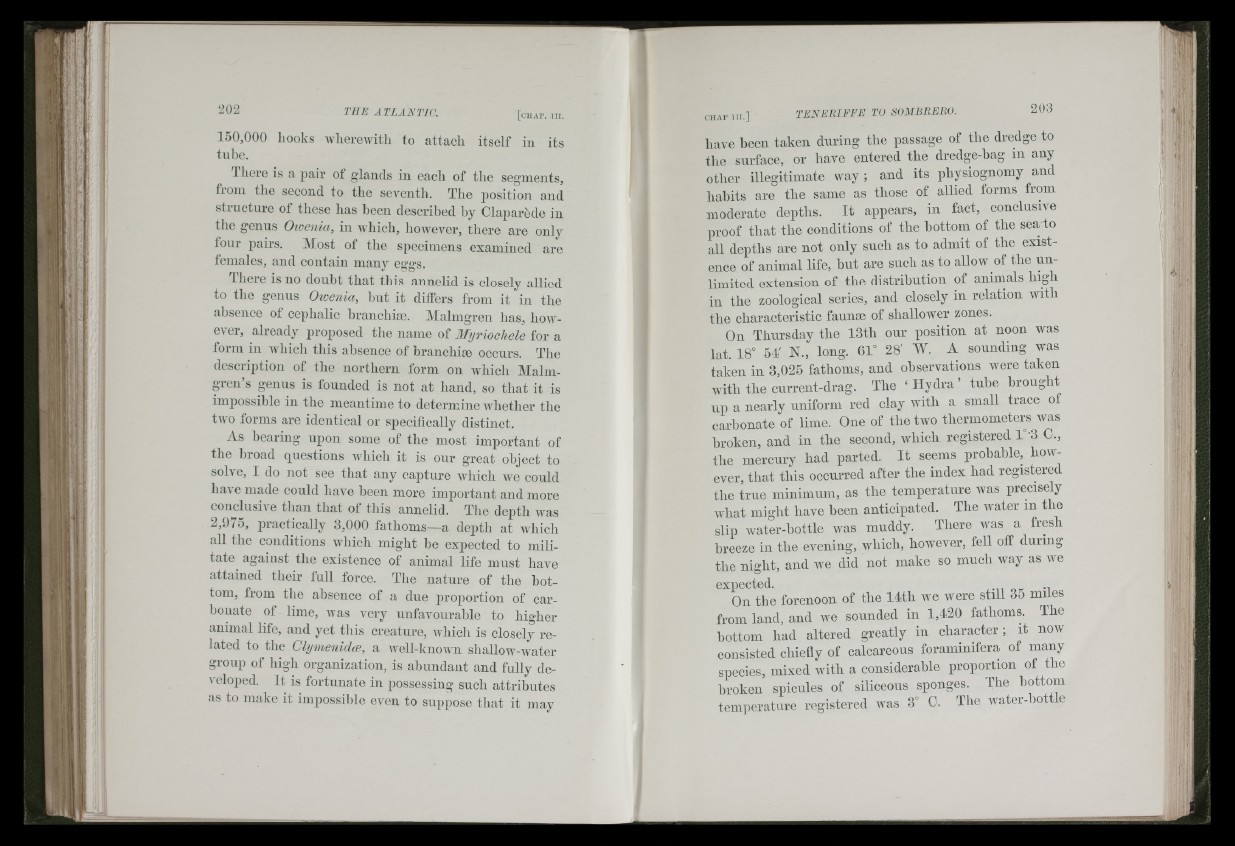
[cU A P . III.
il
150,000 hooks wherewith to attach itself in its
tube.
There is a pair of glands in each of the segments,
from the second to the seventh. The position and
structure of these has heen described by Claparòde iu
the genus Oioema, iu which, howcA'er, there are only
four pairs. Most of the specimens examined are
females, aud contain many eggs.
There is no doubt that this annelid is closely allied
to the genus Otoenia, hut it differs from it in the
absence of cephalic hraiichia). Malmgren has, however,
already jiroposed the name of Myriochele for a
foim in Avhich this absence of branchia) occurs. The
description of the northern form on which Malm-
p-eu’s genus is founded is not at hand, so that it is
impossible in the meantime to determine Avhether the
two forms are identical or specifieally distinct.
As bearing upon some of the most important of
the broad questions Avhich it is our great object to
solve, I do not see that any capture Avliich Ave could
have made could have been more important and more
conclusive than that of this annelid. Tlie depth was
2,975, practically 3,000 fathoms—a depth at Avhich
all the conditions which might he expected to militate
against the existence of animal life must have
attained their full force. The nature of the bottom,
from the absence of a due proportion of carbouate
of lime, was very iinfavourahle to higher
animal life, and yet this creature, Avhich is closely related
to the Clymeniclce, a Avell-known shallow-Avater
group of high organization, is ahiindaiit aud fully de-
A eloped. It is fortunate in possessing such attributes
as to make it impossible even to suppose that it may
203
have been taken during the passage of the dredge to
tlie surface, or have entered the dredge-hag in any
otlier illegitimate way ; and its phpiognomy aud
habits are the same as those of allied forms from
moderate depths. It appears, in fact, conclusive
proof that the conditions of the hottom of the sea to
all depths are not only such as to admit of the existence
of animal life, hut are such as to allow of the unlimited
extension of the distribution of animals high
in the zoological series, aud closely in relation with
the characteristic fauna) of shallower zones.
On Thursday the 13th our position at noon was
lat. 18° 54' N., long. 61° 28' W. A sounding was
taken iu 3,025 fathoms, aud observations were taken
with the current-drag. The ‘ Hydra ’ tube brought
up a nearly uniform red clay with a small trace of
carbonate of lime. One of the two thermometers was
broken, and iu the second, which registered 1 ‘3 C.,
the mercury had parted. It seems probable, hoAV-
ever, that this occurred after the index had registered
the true minimum, as the temperature Avas precisely
Avhat might have been anticipated. Tlie Avater in the
slip water-bottle was muddy. There Avas a fresh
breeze in the evening, which, however, fell off during
the night, aud we did not make so much way as we
expected.
On the forenoon of the 14th we were still 3o miles
from laud, aud we sounded in 1,420 fathoms. The
bottom had altered greatly in character; it now
consisted chiefly of calcareous foramiuifera of many
species, mixed Avith a considerable proportion of the
broken spicules of siliceous sponges. The hottom
temperature registered Avas 3° C. The Avater-hottle
Iii
I if'
l l
ii